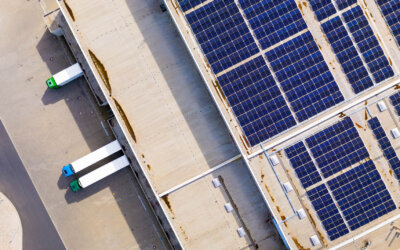And as long as we’re answering reader questions this week, how about a post on kite energy? Humans have been harnessing energy from the wind via sail and rotor for thousands of years. But engineers have recently been tackling the problem with renewed ingenuity, aided by software and some advanced materials.
Much of the excitement centers on kites. Take, for example, this Italian effort to generate electricity by attaching massive kites to a land-based merry-go-round shaped generator. Or this experiment in pulling ocean freighters behind an enormous inflatable wing.
A similar logic propels both efforts. Kites or tethered wings can reach much higher altitudes than standard wind turbines, and therefore have access to a stronger, steadier supply of wind. Kites are also cheaper than windmills, because they don’t require as heavy an investment in materials or construction. Kites are potentially more durable, as they can be quickly reeled in and stored under adverse weather conditions. Earthquakes don’t bother kites. Kites can be deployed anywhere, not just in ecologically sensitive areas such as coastlines and ridgetops that have a consistent supply of unobstructed ground-level wind. Kites are unlikely to annoy birds and bats.
Nor are kites the only way to tap into the energy supply 1,000 feet overhead. Magenn is attempting to loft lighter-than-air generators into the sky by filling them with helium. The generated electricity will be transmitted groundward via the tethers holding the floating rotors in place.
Others are setting their sights higher — much higher. Six to nine miles above the earth’s surface, the jet stream blows steadily at 300 miles per hour. “My calculations show that if we could just tap into 1 percent of the energy in high-altitude winds, it would be enough to power all civilization. The whole planet!” says atmospheric scientist Ken Caldeira, doing his best mad scientist impersonation.
And now for the buzz kill portion of this entry: we don’t post very often on whizzy new renewable energy technologies — despite the fact that everyone, us included, loves to read about them — for a reason.
Long term, renewable energy research is very important. But climate change is a problem now. It takes decades to bring a new technology from R&D to utility scale.
Conventional wind turbines have already made that decades-long transition. Most of the technology that we need to combat climate change exists now, and deployment is more important than greenfield research. This is yet another reason why carbon offsets have an important role to play. Offsets fund deployment of existing technologies.
So that’s the bucket of cold water. But the stuff happening on the forefront of wind energy is undeniably cool and, more important, reasonably likely to yield deployable technology in the medium to long term.
Brought to you by terrapass.com
Featured image







